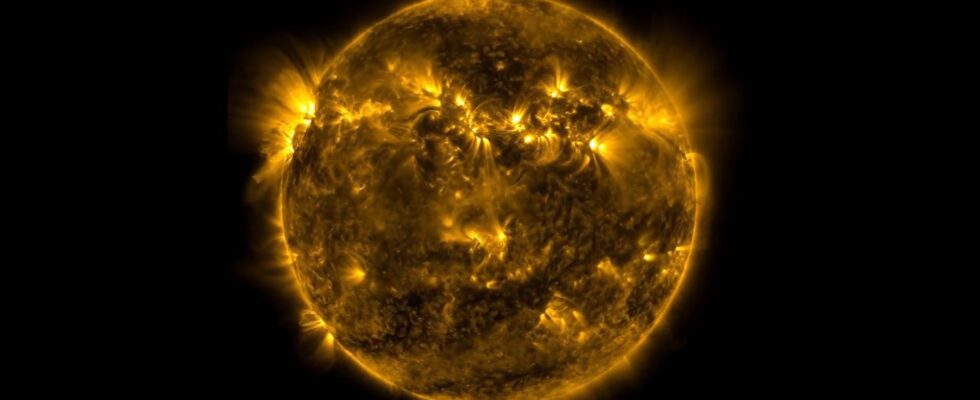NASA has produced a one-hour video summarizing 133 days of activity from the Sun, during the last months of 2022. A 4K video accompanied by relaxing music. The result is fascinating to watch.
This is a relaxing and pleasant experience offered by NASA since January 5, 2023. In a video on YouTube, the American space agency offers to admire the activity of the Sun in an hour-long video, all served by a somewhat hovering background music. And for the show to be grandiose, the image is served in ultra high definition (4K).
4K images and videos of the Sun are of course nothing new to NASA. The agency occasionally offers scenes of solar activity with extreme visual quality, as in 2015. The following year, it showed a solar flare occurring on the surface of the star. All this is possible thanks to a satellite, the Solar Dynamics Observatory (SDO).
An observatory to spy on the activity of the Sun
It’s still with this space observatory — which was launched in February 2010 and is still faithful to the post almost thirteen years later — since NASA produced this video, which summarizes 133 days of solar activity between August 12 and December 22, 2022, within an hour.
Contrary to what one might think, the solar dynamics observatory is not at all close to the Sun, despite its object of study. The satellite is in orbit around the Earth, at an altitude of 35,786 kilometers. To capture the activity of the Sun, the machine can rely on three instruments: a tool specialized in extreme ultraviolet light, a helioseismic and magnetic imager and an atmospheric imagery set.
And the SDO is not content to take the Sun from its best side. Thanks to this observatory, countless new discoveries about how of the Sun could have been made, assures NASA, in particular on the way in which it influences the Solar System. In particular, the magnetic field of the star is at the heart of the concerns of the SDO.
NASA explains that its video shows images taken with a wavelength of 17.1 nanometers (this is the infinitesimal gap between two waves), with 108 seconds apart between two shots (even if the SDO is able to capture an image of the Sun every 0.75 seconds). In this situation, the video helps to highlight the outer atmospheric layer of the Sun — called the corona.
If the video hypnotizes you to the point of watching it in its entirety, you should notice, at times, very punctual darkenings of the image. In question ? Sometimes the Earth or the Moon ended up between the SDO and the Sun, depending on the spatial dynamics of these different bodies and the satellite’s own orbit. There may also be very brief cuts caused by capture errors or a bug in one of the instruments.
